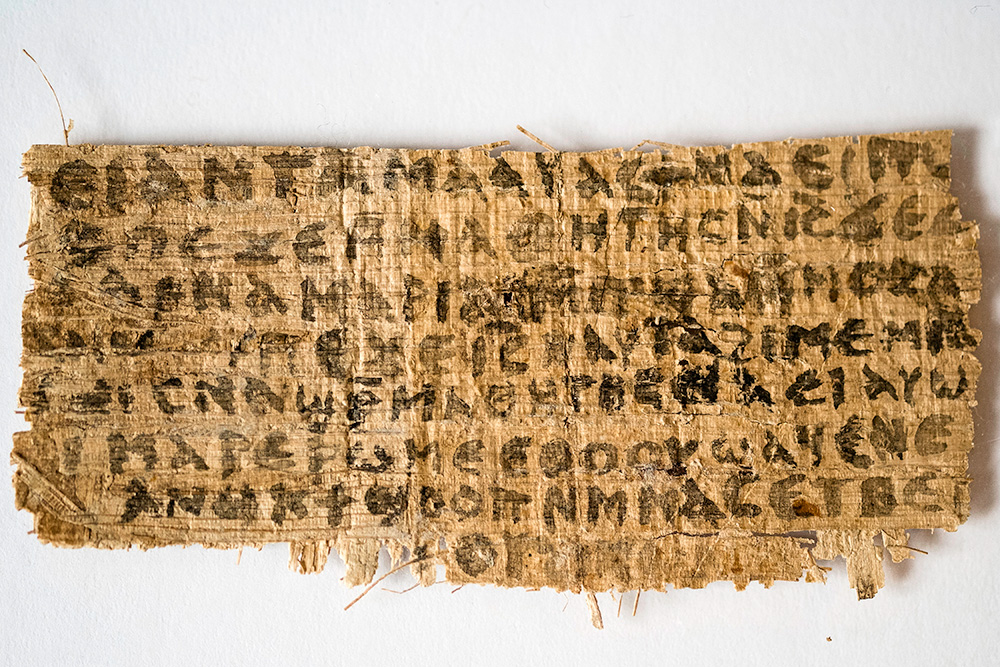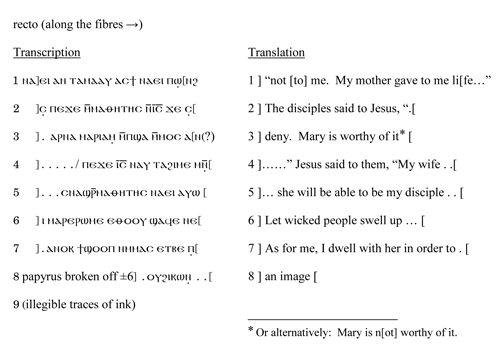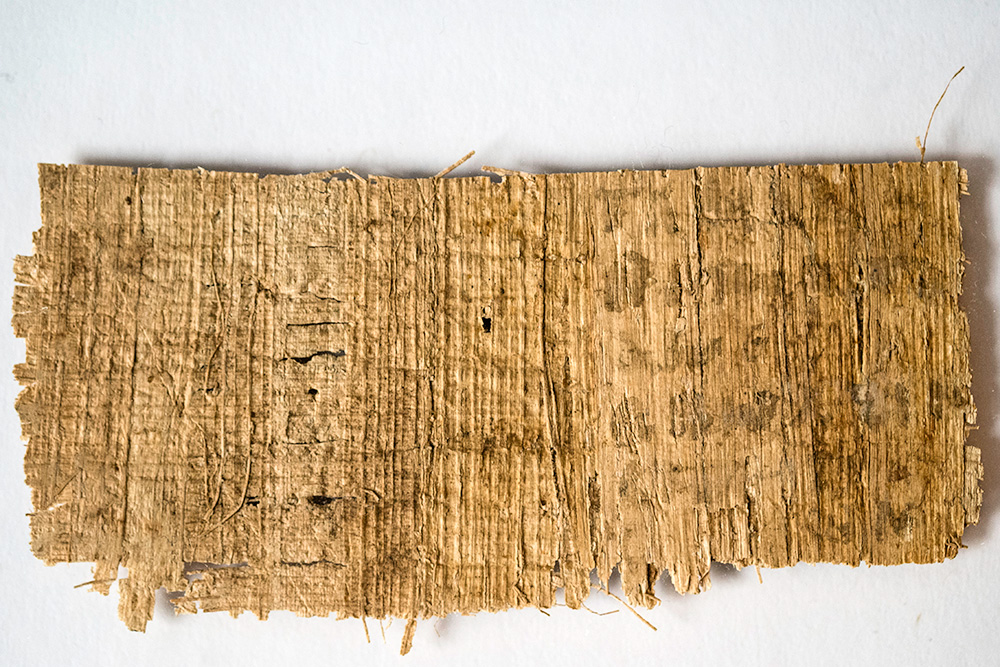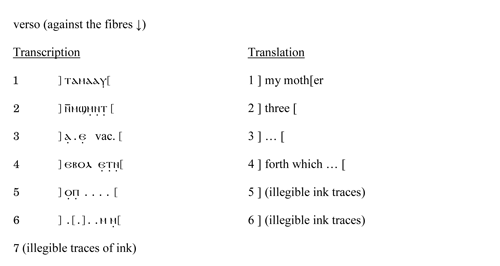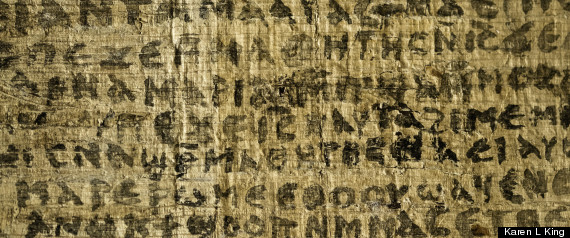
A discovery by a Harvard researcher may shed light on a controversial aspect of the life of Jesus.
Papyrus Fragment Found
Harvard Divinity School professor Karen L. King says she has found an ancient papyrus fragment from the fourth century that, when translated, appears to indicate that Jesus was married.
“My Wife”
The text is being dubbed “The Gospel of Jesus’ Wife.” The part of it that’s drawing attention says, “Jesus said to them, ‘my wife'” in the Coptic language. The text, which is printed on papyrus the size of a business card, has not been scientifically tested to verify its dating, but King and other scholars have said they are confident it is a genuine artifact.
Breaking Traditional Thought
“Christian tradition has long held that Jesus was not married, even though no reliable historical evidence exists to support that claim,” King said at a conference in Rome on Tuesday. “This new gospel doesn’t prove that Jesus was married, but it tells us that the whole question only came up as part of vociferous debates about sexuality and marriage. From the very beginning, Christians disagreed about whether it was better not to marry, but it was over a century after Jesus’s death before they began appealing to Jesus’ marital status to support their positions.”
King, who focuses on Coptic literature, Gnosticism and women in the Bible, has published on the Gospel of Judas and the Gospel of Mary of Magdala. She presented her research Tuesday evening in Rome, where scholars are gathered for the International Congress of Coptic Studies.
Changes Views On Sexuality
The idea that Jesus was unmarried and chaste is largely accepted by Christian denominations and a reason for the practice of celibacy among Roman Catholic priests.
“Beyond internal Catholic Church politics, a married Jesus invites a reconsideration of orthodox teachings about gender and sex,” said journalist and author Michael D’Antonio, who writes about the Catholic Church, in a blog on The Huffington Post. “If Jesus had a wife, then there is nothing extra Christian about male privilege, nothing spiritually dangerous about the sexuality of women, and no reason for anyone to deny himself or herself a sexual identity.”
Against the priests, Muslim scholars were getting married for 1400 years and claiming that it must be casual for all humans.
The quote about Jesus’ wife is part of a description of a conversation between Jesus and his disciples. In the conversation, Jesus talks about his mother twice and speaks once about his wife. One of them is identified as “Mary.” His disciples discuss whether Mary is worthy of being part of their community, to which Jesus replies, “she will able to be my disciple.”
About The Fragment
The fragment has eight incomplete lines of writing on one side and is badly damaged on the other side, with only three faded words and a few letters of ink that are visible, even with the use of infrared photography and computer-aided enhancement.
The private owner of the papyrus first approached King in 2010. King said she didn’t believe the document was authentic, but the owner persisted. She then asked the owner to bring the papyrus to Harvard, where she became convinced it was a genuine early Christian text fragment. Along with Princeton University professor Anne Marie Luijendijk and Roger Bagnall, director of the Institute for the Study of the Ancient World, King claims to have confirmed the document is real. The document’s owner has not been named and King said he does not want to be identified.
It’s unclear when the text was initially discovered. The owner who showed it to King found it in 1997 in a collection of papyri that he acquired from the previous owner, who was German. The papyri included a handwritten German description that had the name of a now-deceased professor of Egyptology in Berlin who called the fragment a “sole example” of a document that claims Jesus was married.
Origins of the Text
The scholars believe the text is from Egyptian Christians before the year 400, as it is written in the language used at that time. Since writing appears on both sides of the fragment, scholars believe it came from a codex, a kind of book, and not a scroll. The scholars also believe the document is a translation of an earlier one that was likely written in Greek.
King notes in her research that the idea of Jesus’ celibacy hasn’t always existed, and that early Christians debated whether they should marry or practice celibacy. It was not until around the year 200 that Christian followers began to say Jesus was unmarried, according to a record King cites from Clement of Alexandria. In his writing, Clement — an early theologian — said that marriage was a fornication put in place by the devil, and that people should emulate Jesus by not marrying.
One or two decades later, Tertullian of Carthage in North Africa declared that Jesus was “entirely unmarried” and told Christians to remain single. But Tertullian did not come out against sex altogether and allowed couples to get married one time, denouncing divorce and remarriage as overindulgent. A century earlier, the First Epistle of Paul to Timothy said in the New Testament that people who forbid marriage are going by the “doctrines of demons,” but did not include anything about Jesus being married in order to make the point.
Could This Change Our Views on Celibacy?
The point of view that ultimately became dominant was that celibacy is preferred as a high sexual virtue among Christians, but that marriage is needed for the sake of reproduction.
“The discovery of this new gospel,” King said, “offers an occasion to rethink what we thought we knew by asking what role claims about Jesus’ marital status played historically in early Christian controversies over marriage, celibacy, and family. Christian tradition preserved only those voices that claimed Jesus never married. The Gospel of Jesus’s Wife now shows that some Christians thought otherwise.”
The Da Vinici Code
The life of historical Jesus is often a matter of controversy, and this is not the first time it’s been proposed that Jesus was married. Most recently, Dan Brown’s novel “The Da Vinci Code” depicted Jesus as being married to Mary Magdalene. The book was published as fiction, but nonetheless attracted loud criticism from Vatican officials.

